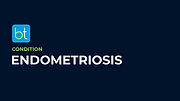BackTable / OBGYN / Podcast / Episode #35
The Natural Orifice Surgery: Vaginal Hysterectomy
with Dr. Amy Park
In this episode, hosts Dr. Mark Hoffman and Dr. Amy Park have an in-depth discussion on the topic of vaginal hysterectomy. Amy, who handles a substantial caseload of vaginal hysterectomies, takes the lead in this conversation as she walks through the procedure and its intricacies. In Mark's practice as a Minimally Invasive Gynecologic Surgery (MIGS) surgeon, he typically deals with cases involving candidates for laparoscopic hysterectomies, while many vaginal hysterectomy cases are referred to urogynecologists.
Be part of the conversation. Put your sponsored messaging on this episode. Learn how.

BackTable, LLC (Producer). (2023, September 28). Ep. 35 – The Natural Orifice Surgery: Vaginal Hysterectomy [Audio podcast]. Retrieved from https://www.backtable.com
Stay Up To Date
Follow:
Subscribe:
Sign Up:
Podcast Contributors
Synopsis
Both Amy and Mark stress the critical importance of selecting a surgical approach that aligns with a patient's medical history and anatomical considerations. Amy asserts that a patient is a suitable candidate for a vaginal hysterectomy when they possess a tall and mobile uterus, with ample vaginal space, and a pelvic outlet of sufficient width. Furthermore, she highlights that patients with a cervix located within 6 cm from the hymenal remnant are good candidates for vaginal hysterectomies.
The physicians delve into the topics of competency and confidence within the operating room. They agree that the volume of surgeries, repeated practice, pattern recognition, and experience in managing complications are pivotal factors contributing to a surgeon's growing competence with each case. Both doctors concur that it typically takes approximately three to five years to achieve confidence and a reduction in anxiety levels regarding surgical cases.
Amy proceeds to describe each step of a vaginal hysterectomy and shares her preferred practices in the operating room. To ensure patient comfort and safety, she positions her patients in the dorsal lithotomy position, taking special care to avoid exerting pressure on the peroneal and femoral nerves. While providing sacral support, she positions the remainder of the perineum as close to the edge of the table as possible to maximize vaginal access. Amy initiates the procedure with a posterior colpotomy using a 10-blade after administering lidocaine. Gradually, she progresses anteriorly, retracting the vaginal epithelium until the peritoneal folds become visible. She tags the uterosacral ligaments and proceeds to access the pelvis anteriorly, paying careful attention to avoid injuring the ureters. She systematically advances to the utero-ovarian ligament and artery, concluding by addressing the fallopian tube and ovary. Amy emphasizes her preference for two-handed knotting in all vaginal cases to achieve optimal tension and mentions her infrequent use of energy devices.
Finally, Mark and Amy discuss the evolution of training within the operating room over the years, acknowledging the changing landscape due to advancements in technology and varying case volumes. They underscore the significance of mastering technical skills outside of the operating room, which enables trainees to dedicate the necessary time to enhancing their operative abilities.
Transcript Preview
[Dr. Amy Park]
Yes. First of all, choosing the right candidate for surgery is like pre-operative selection for any surgery is 80% of the decision-making. The rest of it is, yes, technical skills and interoperative judgment. I always say it's like that Kenny Rogers song, it's like, "You need to know when to hold them, know when to fold them, know when to walk away, know when to run." That's a lot of it.
The Materials available on BackTable are for informational and educational purposes only and are not a substitute for the professional judgment of a healthcare professional in diagnosing and treating patients. The opinions expressed by participants of the BackTable Podcast belong solely to the participants, and do not necessarily reflect the views of BackTable.















